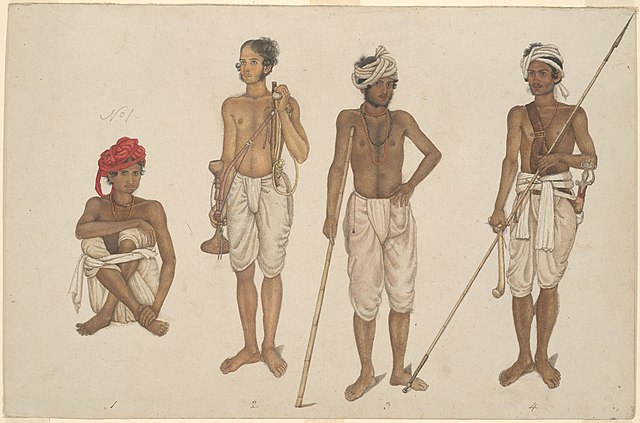
Dhoti
Ethnic garment worn by men in the Indian subcontinent / From Wikipedia, the free encyclopedia
Dear Wikiwand AI, let's keep it short by simply answering these key questions:
Can you list the top facts and stats about Dhoti?
Summarize this article for a 10 year old
The dhoti, also known as veshti,[1] mardani, dhotar, jaiñboh, or panchey, is a piece of cloth arranged around the legs to resemble trousers.[2][3][4] It is most popular in India and Nepal.[citation needed] The dhoti is a lower garment forming part of ethnic wear for men in the Indian subcontinent.[5] The dhoti is fashioned out of a rectangular piece of unstitched cloth, usually around 4.5 metres (15 ft) long, wrapped around the waist and the legs and usually knotted in the front.

The dhoti is considered to be the male counterpart of the saari worn by females to religious and secular ceremonies (functions).[6] A pitambar is a yellow silk dhoti worn on auspicious occasions.[7][8] The dhoti must not be confused with "dhoti pants" which are a new ready to wear trend, popular among women and typical of children.[9][10][11]
